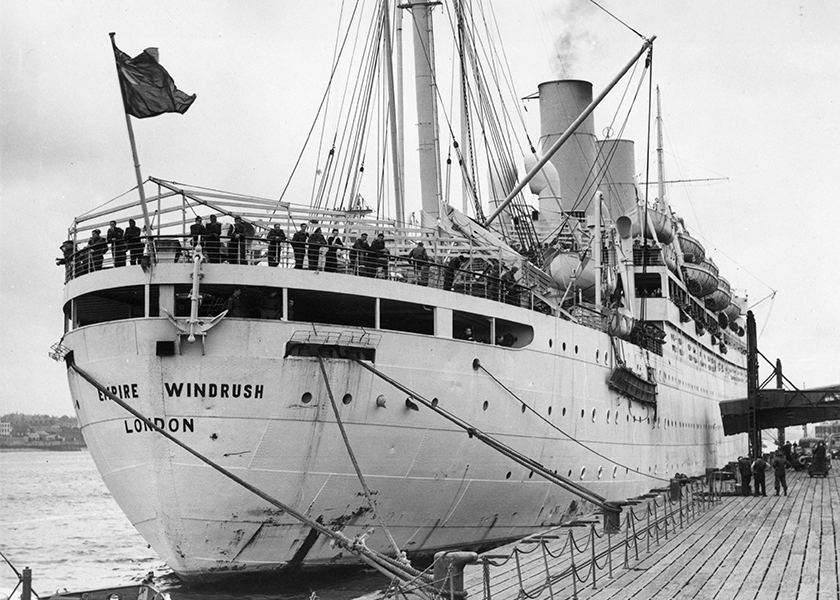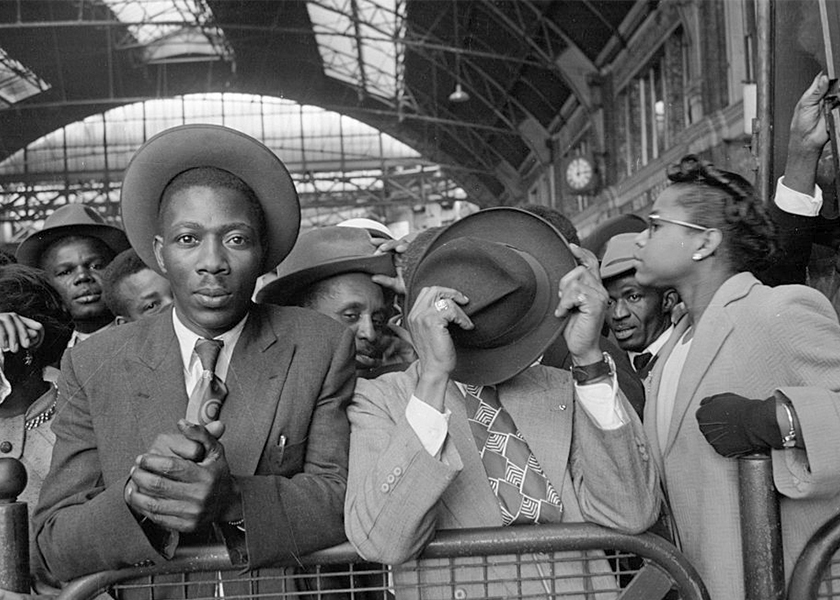- Home |
- Search Results |
- Books that define the ‘Windrush’ experience
Books that define the ‘Windrush’ experience
It's been 75 years since 1948, when the first generation of Caribbean migrants who helped rebuild post-war Britain began to arrive. Here Sara Collins, the award-winning author of The Confessions of Frannie Langton, offers a reading list of books that help define their experience.

"Ships at a distance have every man’s wish on board."
Though it has nothing at all to do with West Indian immigration to England, the opening line of Zora Neale Hurston’s Their Eyes Were Watching God always springs to mind when I picture the S.S. Empire Windrush nudging her way into the Tilbury docks, with passengers in their Sunday best craning over the railings, anxious to see this place they’ve loved for so long without ever setting foot in it. The reasons for coming might have been as plentiful as the people on the decks, but we know that among them was the desire to help with rebuilding England after the war, as well as the fiercely held conviction that they too were British, and entitled to be here. The Windrush had all of their wishes on board.
The English people greeted the West Indians with suspicion, bewilderment and, in many cases, outright racism. Each side had to get to know the other and, in the process, had to re-invent themselves. Luckily, among those who came to England shortly after the Windrush were Sam Selvon and George Lamming, two of the finest writers of the 20th Century. They were the chroniclers of their generation; in London, they had the access and opportunity to be published and, together with their counterparts, to put West Indian literature indelibly on the map.
The arrival of a newcomer is a classic trope of storytelling because it forces change as well as introspection. The disembarking of those early post-war immigrants marked the beginning of a major shift in the so-called Empire, as well as the beginning of a new phase in the West Indian project for reclaiming of independence, identity and self-respect. For this reason stories of the era have long made for prize-winning, bestselling and illuminating reading.
The Lonely Londoners by Sam Selvon
The Lonely Londoners begins, ‘One grim winter evening, when it had a kind of unrealness about London,’ and from there we follow Moses on the number 46 bus to Waterloo to meet a ‘fellar who was coming from Trinidad on the boat-train.’ Moses is a reluctant welcoming party for the new arrivals, whom he guides through the intricacies and idiosyncrasies of London life. Selvon said that he was the first Caribbean writer to employ dialect in a full-length novel for narrative and dialogue. The result is musical, addictive, unparalleled prose. This is the iconic Windrush novel. No other writer has come closer to the truth of how it must have felt not only having to navigate a new city but also to navigate a new version of themselves.
Small Island by Andrea Levy
Small Island has four narrators, and Levy nails each one. Queenie is an English woman who rents a room to Jamaican Gilbert after his arrival on the Windrush. His snobbish, nit-picking wife Hortense arrives later from Jamaica, and then Bernard, Queenie’s husband, makes his way back home belatedly after serving in the war. Gilbert and Hortense’s efforts to adjust to life in England – the racism, the dashing of their dreams, and the resilience with which they rebuilt them – is all conveyed in a way that feels epic, yet almost painfully intimate at the same time.
Levy’s father travelled to England on the Windrush, so she had the kind of childhood that made her perfectly placed to write this novel. It is storytelling of the highest order, which won both the Whitbread and Orange prizes and has been adapted for television and stage, and launched the careers of numerous Black British writers who count Levy among their inspirations.
This Lovely City by Louise Hare
Louise Hare’s debut novel, This Lovely City, clearly owes a debt to Levy. It tells the story of Lawrie, a Jamaican postman living in Brixton in 1950, with a side gig playing the clarinet in Soho jazz clubs. Lawrie’s simple ambitions – to make a good life for himself with the woman he loves, mixed-race Evie – are derailed when he discovers the body of a black baby in a pond on Clapham Common and suspicion falls on him. It is part love story, part mystery, part meditation on post-war London.
The ‘lovely city’ is ravaged, recovering. It fails to live up to expectations: ‘A plane had greeted them as they sailed up the Channel, Lawrie and his friends crowding into the deck to look up in wonder. He had thought it an impressive gesture, excitement growing, until they’d arrived in Tilbury the next day to find nothing ready for them.’
As far as I know, Hare doesn’t have any Caribbean heritage, but this novel should earn her a place as an honorary West Indian.

Ormonde by Hannah Lowe
Most people think West Indian post-war migration started with the Windrush, but the Ormonde actually came before it, and Hannah Lowe’s father was on board when it docked in 1947. In this collection she imagines the multitude of stories of its passengers. The poems are freighted with nostalgia; they assemble to make a fine reimagining, brimming with pride and emotional power. For example, in ‘Ship-breaking’:
…And now my mind replays
a ciné-film: the young man on a gangway –
the trilby tilted, pocket hankie, his smartest gear
and his stride so well-rehearsed – it says I’m here
A quote from Stuart Hall serves as epigraph to that poem: ‘These folks were not the victims of migration…these folks mean to survive.’
Homecoming: Voices of the Windrush Generation by Colin Grant
Colin Grant is one of the leading historians of the Windrush generation. This seminal work is a compilation of some of their stories, the product of extensive interviews and archival research. In the introduction, Grant outlines the migrant’s dilemma: ‘In almost every West Indian family I knew, there was this division between adults, between the dreamers who were given to nostalgia about the West Indies and the sacrifices they’d made, and those who focused on the hard-nosed reality of life in Britain.’ Homecoming navigates that divide with care and with respect, capturing the experiences of those West Indian pioneers by allowing them to speak for themselves. It is their book, as much as Grant’s, and their voices are compelling. As you read it, you will feel as if you’re in their sitting rooms hearing them speak, and then you will feel better for having done so.
The Windrush Betrayal: Exposing the Hostile Environment by Amelia Gentleman
Gentleman led the investigative reporting for the Guardian on the impact on West Indian immigrants and their descendants of the Conservative government’s ‘hostile environment’ policy, documenting the staggering loss of benefits, homes and jobs, the uncertain status, the deportations. The shockingly callous treatment felt like a tragic ending to the Windrush story, but Gentleman’s tenacious reporting, as well as the courage of those who told her their stories, resulted in resounding calls for an end to this state-sponsored cruelty and the resignation of then Home Secretary, Amber Rudd.
In the foreword to this book, which is Gentleman’s account of her investigation, Katherine Viner quotes from a letter from Guy Hewitt, the Barbados High Commissioner: ‘The Caribbean owes her an immeasurable debt of gratitude.’